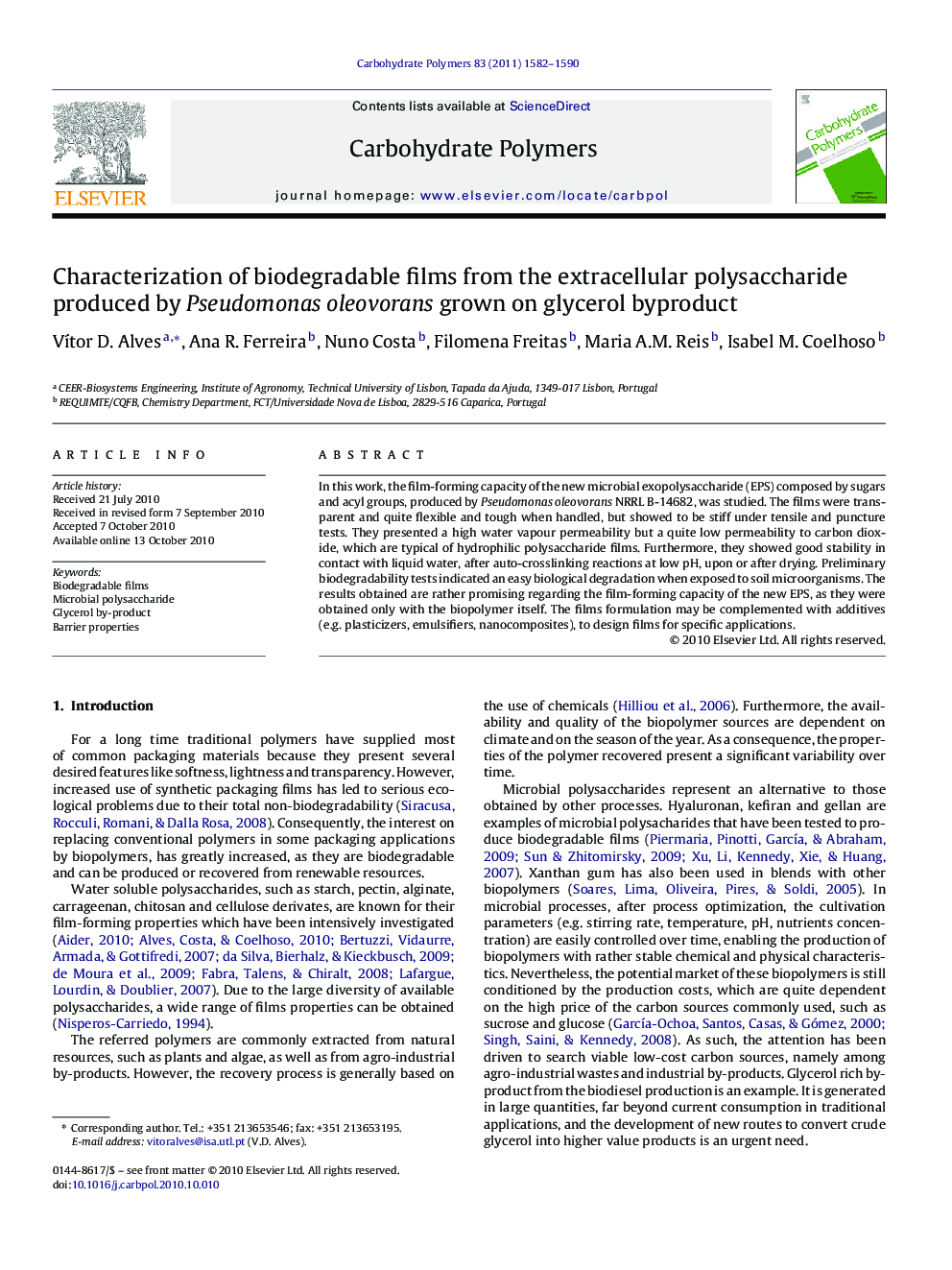| Article ID | Journal | Published Year | Pages | File Type |
|---|---|---|---|---|
| 1386794 | Carbohydrate Polymers | 2011 | 9 Pages |
In this work, the film-forming capacity of the new microbial exopolysaccharide (EPS) composed by sugars and acyl groups, produced by Pseudomonas oleovorans NRRL B-14682, was studied. The films were transparent and quite flexible and tough when handled, but showed to be stiff under tensile and puncture tests. They presented a high water vapour permeability but a quite low permeability to carbon dioxide, which are typical of hydrophilic polysaccharide films. Furthermore, they showed good stability in contact with liquid water, after auto-crosslinking reactions at low pH, upon or after drying. Preliminary biodegradability tests indicated an easy biological degradation when exposed to soil microorganisms. The results obtained are rather promising regarding the film-forming capacity of the new EPS, as they were obtained only with the biopolymer itself. The films formulation may be complemented with additives (e.g. plasticizers, emulsifiers, nanocomposites), to design films for specific applications.
